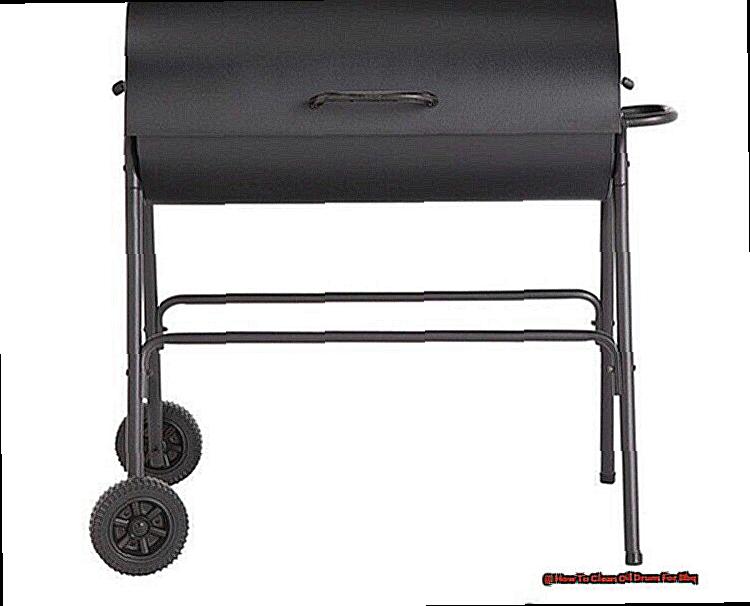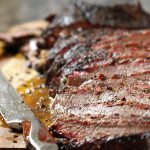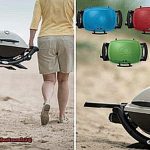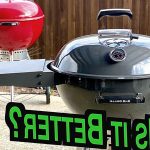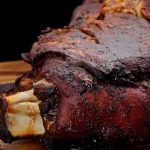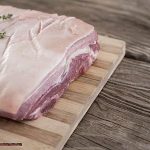Imagine this: the sun is shining, birds are chirping, and the mouth-watering smell of BBQ fills the air. You can practically taste those juicy burgers and smoky ribs already. But before you start grilling, there’s one important task to tackle: cleaning your oil drum.
Don’t let a dirty and greasy drum ruin your summer cookouts.
In this blog post, we’ll guide you through the process of cleaning an oil drum with ease and efficiency. From gathering supplies to achieving a sparkling finish, we’ve got you covered.
First things first, let’s gather all the necessary materials for this job. You’ll need gloves, goggles, a wire brush or steel wool, degreaser or dish soap, a scraper or putty knife, a hose or pressure washer, and some old rags or towels for wiping down. Once you have everything ready, it’s time to get down to business.
But before we jump into scrubbing away years of grime and buildup, safety should always be a top priority. Be sure to wear protective gear such as gloves and goggles to avoid any accidents or injuries. And don’t forget to properly dispose of any leftover oil in an environmentally friendly manner.
Now that we have our safety measures in place, it’s time to tackle that stubborn rust and grease. Use a degreaser or dish soap mixed with hot water to break down any oils on the surface of the drum. Then use a wire brush or steel wool to scrub away any remaining residue.
For tougher buildup or rust spots, use a scraper or putty knife to gently scrape them off without damaging the surface of the drum. Rinse off any debris with a hose or pressure washer.
Once you’ve removed all the grime and rust from your oil drum, give it one final rinse with clean water. Then wipe it down with a towel or rag to dry and achieve that sparkling clean finish. And voila, your oil drum is ready for another season of grilling.
To keep your oil drum in top shape, remember to regularly clean and maintain it. This will not only ensure a longer lifespan for your drum but also prevent any unwanted flavors from transferring onto your food.
Now, let’s get started.
Contents
- 1 What is an Oil Drum BBQ?
- 2 The Origins of Oil Drum BBQ
- 3 Benefits of an Oil Drum BBQ
- 4 Is an Oil Drum BBQ a Grill? Or is it a Smoker?
- 5 Horizontal vs. Vertical Drum BBQs
- 6 Buying vs. Building an Oil Drum BBQ
- 7 How to Build an Oil Drum BBQ Grill?
- 8 How to Clean and Maintain an Oil Drum BBQ Grill?
- 9 Conclusion
What is an Oil Drum BBQ?
The unique design of an Oil Drum BBQ makes it a highly efficient and versatile outdoor cooking method. Its cylindrical shape, resembling a barrel or drum, allows for optimal smoke circulation and even heat distribution, resulting in perfectly cooked food with every use. This sets it apart from other types of BBQs in terms of shape, size, heat distribution, and cooking capabilities.
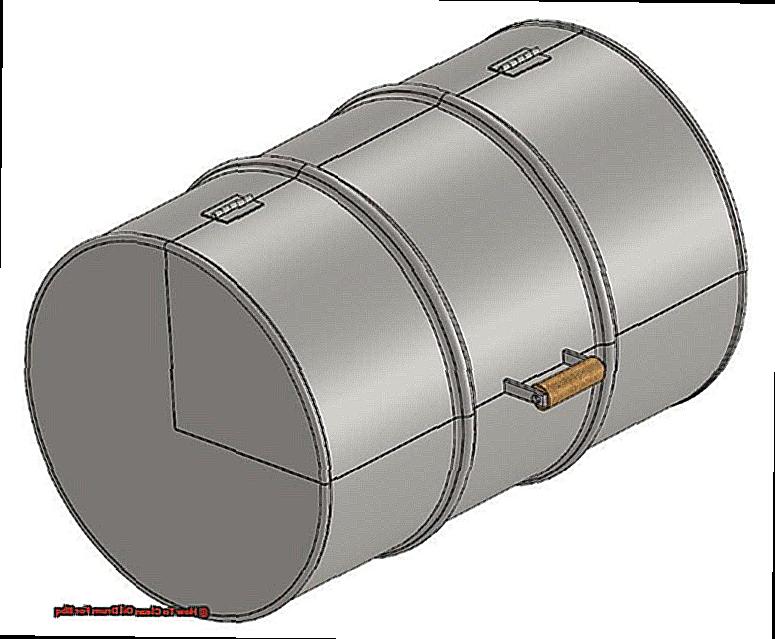
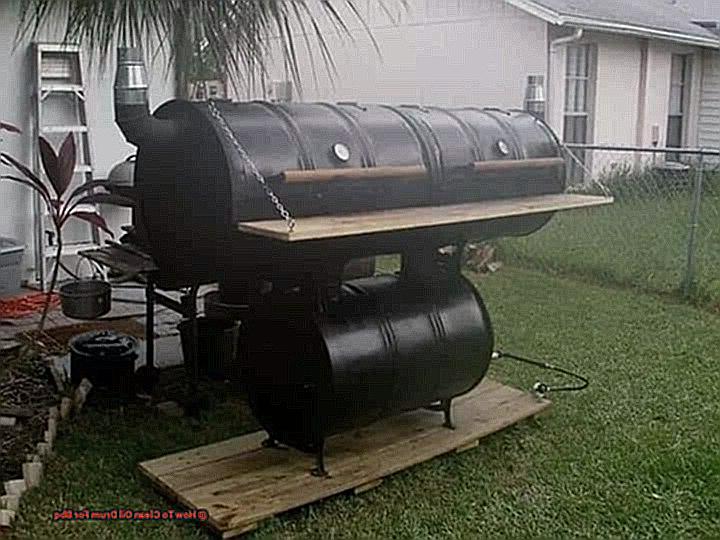
| Shape | The distinctive cylindrical shape of an oil drum BBQ sets it apart from other types of BBQs. This unique design allows for efficient smoke circulation and even heat distribution, ensuring that food is cooked to perfection. |
| Size | Oil drums come in various sizes, making them suitable for a variety of cooking needs. Whether you’re cooking for a small group or hosting a large outdoor event, there is an oil drum BBQ size that will meet your requirements. |
| Heat Distribution | The barrel design of an oil drum BBQ ensures even heat distribution throughout the cooking process. This is especially important for slow-cooking meats, such as briskets and ribs, where consistent heat is crucial for tender and juicy results. |
| Cooking Capabilities | An oil drum BBQ offers versatile cooking capabilities, allowing for both direct and indirect heat methods. Its lid traps heat and smoke inside the barrel, creating an ideal environment for slow and steady cooking. With air vents for temperature control and charcoal grates and cooking grates for support and space, this BBQ has everything you need for a successful cookout. |
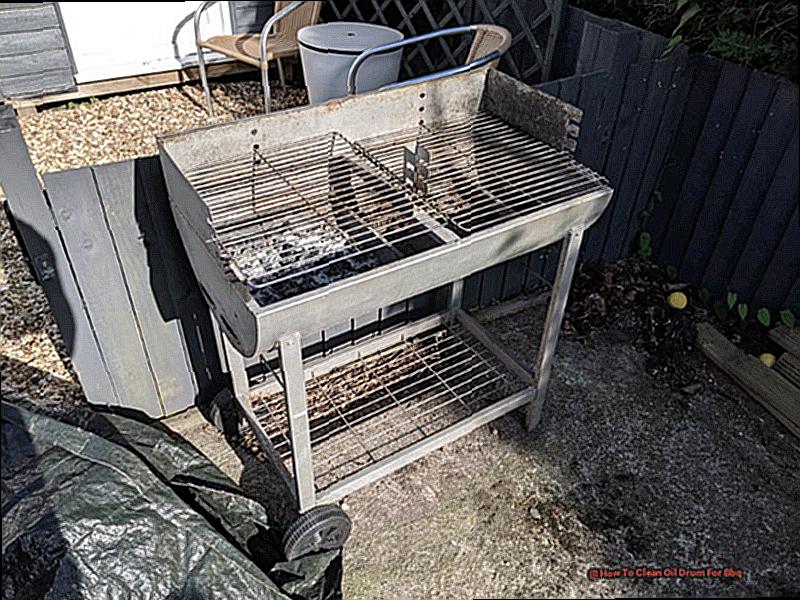
Compared to gas grills or traditional charcoal grills, oil drum BBQs excel in terms of smoke circulation and heat distribution due to their unique barrel design. They also have a larger cooking capacity than gas grills and can reach higher temperatures than traditional charcoal grills. Furthermore, oil drum BBQs are more cost-effective and offer convenient storage options due to their compact size.
The Origins of Oil Drum BBQ
The oil drum has a rich and varied history, with many different uses throughout time. One of its most interesting uses is as a BBQ grill, which has become increasingly popular among BBQ enthusiasts in recent years. Let’s take a closer look at the origins of Oil Drum BBQs and explore how they have become a favorite choice for cooking up delicious grilled and smoked meats.
The origins of Oil Drum BBQs can be traced back to the early 1900s during the Oil Rush. It was during this time that journalist-turned-inventor Nellie Bly patented the design for steel drums used for storing oil. These drums were known for their sturdiness and heat-resistant properties, making them the perfect candidate for repurposing into BBQ grills.
Resourceful immigrant workers quickly caught on to the potential of these steel drums and began using them for grilling and smoking meat. Not only were they a cost-effective alternative to traditional grills, but their ruggedness and durability also made them ideal for use at motorsports events, tailgating parties, and even in commercial kitchens.
One of the main reasons for the rise in popularity of Oil Drum BBQs is their versatility. These grills can be easily customized with additional grates to cook low and slow or keep food warm until it’s ready to be served. Furthermore, the sturdy steel drum construction with metal rolling hoops makes them more resilient than standard grills.
While some BBQ enthusiasts may choose to build their own Oil Drum BBQ, there are pre-made options available on the market as well. However, it is crucial to select the right type of oil drum for a safe and effective BBQ smoker.
Traditionally, Oil Drum BBQs use charcoal as their fuel source, but they can also be adapted to use gas or electrical coils. As with any type of barbecue grill, it is important to follow safety precautions when using an Oil Drum BBQ.
Benefits of an Oil Drum BBQ
There are numerous advantages to using an oil drum BBQ compared to other types of grills. So, let’s delve into the details below and explore the benefits of an Oil Drum BBQ.
Sturdy and Heat Resistant
An oil drum is constructed from steel, making it robust and capable of withstanding high temperatures without warping or cracking. This makes it perfect for grilling and smoking meats without the risk of damaging the equipment.
Cost-effective
Oil drums can be bought new or recycled, providing a budget-friendly option for those looking to build their own BBQ. This also makes it a great option for businesses looking to invest in multiple grills.
Durable Design
The steel drum design dates back to the early 1900s, proving its durability. This means that an oil drum BBQ can last for many years with proper care and maintenance.
Customizable
Oil Drum BBQs can be built with specific configurations and colors, offering a personalized touch to your grilling experience.
More Space for Grilling
The size of an oil drum provides more space for grilling compared to traditional grills. Extra grates can also be added to increase the cooking capacity, making it perfect for large gatherings or commercial use.
Environmentally Friendly
Using old steel drums to build your BBQ is an eco-friendly option as it repurposes materials that would otherwise go to waste.
Flexibility in Size
Oil Drum BBQs come in various sizes, catering to both lone-wolf grillers and commercial businesses. This allows for flexibility in cooking options and enables different quantities of food to be prepared at once.
Iconic Look
The ruggedness and industrial appearance of an Oil Drum BBQ have made it a symbol of American barbecue culture and gained popularity among BBQ enthusiasts.
Versatility in Cooking Methods
Oil Drum BBQs can be used as both a grill and smoker, offering versatility in cooking methods and allowing for a variety of dishes to be prepared.
Complete Control
Building your own Oil Drum BBQ gives you full control over every aspect of the equipment, from size and design to heat distribution and cooking method.
Is an Oil Drum BBQ a Grill? Or is it a Smoker?
When it comes to oil drum BBQs and traditional grills or smokers, the most noticeable difference lies in their design and materials. Unlike traditional grills or smokers, which are usually made from thin metal or other materials, oil drum BBQs are constructed using more durable and heat-resistant steel drums.
Another major contrast is the type of fuel used. While traditional grills and smokers can run on propane, gas, or electricity, oil drum BBQs rely solely on charcoal as their primary fuel source. This gives them a distinct smoky flavor that cannot be replicated by other types of grills or smokers.
Moreover, oil drum BBQs offer a wider range of cooking methods. They can be used horizontally as a grill for direct heat or vertically as a smoker for indirect heat, making them perfect for both high-temperature grilling and low and slow smoking.
In terms of maintenance, oil drum BBQs require regular cleaning to prevent the build-up of grime and dirt. If using a recycled oil drum, it is important to carefully inspect for any potential hazards.
Overall, while traditional grills and smokers may provide convenience and ease of use, oil drum BBQs offer a unique and customizable cooking experience with the added bonus of being environmentally friendly.
Horizontal vs. Vertical Drum BBQs
The primary distinction between horizontal and vertical drum BBQs is their orientation, with horizontal BBQs lying flat and vertical BBQs standing upright. This orientation plays a significant role in the cooking process, maintenance, and cleaning of the BBQ.
One of the most notable differences between the two types is their smoking capacity. Horizontal drum BBQs typically have a larger cooking surface and can accommodate more food, making them a better option for individuals who frequently host large gatherings or cook for large families. In contrast, vertical drum BBQs have a limited smoking capacity and are better suited for smaller groups or individuals.
The orientation also affects the distribution of heat and maintenance of even heat during the cooking process. Horizontal drum BBQs have their heat source on one side, allowing for easier temperature control and maintenance. On the other hand, vertical drum BBQs have their heat source at the bottom, and opening the chamber to add more fuel or check on the food can significantly impact the temperature.
When it comes to cleaning, vertical drum BBQs may be slightly easier to maintain due to their compact design. However, both types require regular cleaning to ensure safe and hygienic cooking. The grates, interior walls, and ash catcher should be cleaned after each use to prevent a buildup of grease and residue. Furthermore, regularly cleaning the exterior of the BBQ is crucial to avoid rusting.
Ultimately, the choice between a horizontal or vertical drum BBQ depends on personal preference and specific needs. Both offer unique features and benefits that cater to various cooking styles and purposes.
Buying vs. Building an Oil Drum BBQ
When it comes to purchasing an oil drum BBQ, there are two options: buying a pre-made one or building one yourself. Both have their own set of benefits and drawbacks, which we will discuss in detail below.
Factors to consider when buying a pre-made Oil Drum BBQ:
- Convenience: A pre-made Oil Drum BBQ requires minimal effort and time to set up, making it a convenient option for those who are not experienced with building grills. However, it may lack the satisfaction of creating something yourself and the ability to customize it according to your preferences.
- Guaranteed quality: Pre-made grills have been tested and approved by experts, ensuring that they meet safety standards and are made with durable materials. This gives you peace of mind knowing that you are purchasing a reliable and long-lasting product.
- Variety of features: Many pre-made Oil Drum BBQs come with additional features such as multiple grates or customizable settings, allowing for more versatility in cooking. This can enhance your grilling experience and make it more enjoyable.
- Less risk of injury: Building a grill yourself can be dangerous if you are not familiar with construction tools. Buying a pre-made one eliminates this risk. However, it may not fulfill the satisfaction of creating something from scratch and learning new skills.
Factors to consider when building an Oil Drum BBQ yourself:
- Control over design and features: Building your own grill allows you to choose every detail, from the type of drum used to the features included. This gives you more control over how your grill functions and looks, making it truly unique and personalized.
- Cost-effective: Building an Oil Drum BBQ yourself can save money compared to buying a pre-made one, especially if you already have some of the necessary tools or materials on hand. This can be a great option for those on a budget or looking to exercise their DIY skills.
- Fun project: For DIY enthusiasts, building an Oil Drum BBQ can be an enjoyable project that allows them to learn new skills and spend time with family or friends while creating something useful. This can add a sense of accomplishment and satisfaction to your grilling experience.
However, there are also drawbacks to consider when building a grill yourself:
- Time-consuming: Building a grill from scratch requires time and effort, which may not be feasible for those with busy schedules or limited construction experience. This may not be the best option for those looking for a quick and easy solution.
- Safety risks: Working with construction tools can be dangerous if proper precautions are not taken, making it a risky option for those without experience. It is important to prioritize safety and take necessary precautions when building your own grill.
- Potential for unsatisfactory results: Building a grill yourself may not always result in the desired outcome, especially if you are new to barbecuing or working with metal drums. This may require some trial and error before achieving the perfect grill.
How to Build an Oil Drum BBQ Grill?
To build an oil drum BBQ grill, you will need to follow these steps and gather the necessary materials.
Steps:
Prepare and cut the oil drum to your desired size and shape.
Construct a sturdy frame using metal bars or pipes.
Paint the drum with heat-resistant paint and assemble all parts, including grates, vents, handles, and legs.
Use high-quality charcoal as your fuel source for optimal grilling.
Regularly clean and maintain your grill to ensure its longevity.
Materials:
-
- A new or recycled oil drum that meets your specifications.
- Tools for cutting and welding metal, such as saws and torches.
- Metal bars or pipes to create a strong frame for your grill.
- Heat-resistant paint to protect the drum from high temperatures.
- Necessary components for assembly, including grates, vents, handles, and legs.
- High-quality charcoal to use as fuel for your grill.
>
- Soap and water for cleaning and maintaining your grill.
Keep in mind that the size and shape of your oil drum will determine the amount of food you can cook at one time. Additionally, the quality of your materials will greatly impact the durability and effectiveness of your BBQ grill. By following these steps and utilizing the proper tools and materials, you can create a functional and efficient oil drum BBQ grill that will provide delicious meals for years to come. Don’t forget to regularly clean and maintain your grill to keep it in top condition.
How to Clean and Maintain an Oil Drum BBQ Grill?
To ensure safe and enjoyable cooking experiences, it is crucial to properly clean and maintain an oil drum BBQ grill. Follow these essential steps:
Disassemble the grill
Before cleaning, disassemble the grill and remove any hardware or handles. This will make it easier to clean all parts of the drum.
Burn off remaining oil residue
To eliminate any leftover oil residue, light a fire inside the drum or add charcoal and sawdust for a smoldering fire. This will help burn off the residue and make it easier to clean.
Scrub away dirt and cobwebs
Use a scrub brush or soap and water to remove any dirt or cobwebs from the exterior of the drum.
Apply a cleaning solution
For a deep clean, mix equal parts of baking soda and vinegar to create a paste. Apply this paste to the interior of the drum and let it sit for a few hours.
Rinse thoroughly
After allowing the cleaning solution to sit, use a garden hose to rinse off the interior of the drum. Make sure to thoroughly rinse and remove all traces of the cleaning solution.
Disinfect
To disinfect the drum, mix 1/4 cup of bleach for every gallon of water in the barrel. Pour this mixture into the drum and let it sit for a few hours before rinsing it out with water.
Dry completely
Once you have thoroughly rinsed the drum, make sure to dry it completely before reassembling and using it again.
Conclusion
In conclusion, a clean oil drum is crucial for a successful and enjoyable BBQ experience.
Following our step-by-step guide will help you achieve that sparkling finish with ease and efficiency. Safety should always be a top priority when cleaning your oil drum, and regular maintenance will extend its lifespan and prevent unwanted flavors from transferring onto your food.
So the next time you light up the grill, ensure that your oil drum is spotless and well-maintained to cook up some mouth-watering dishes.

